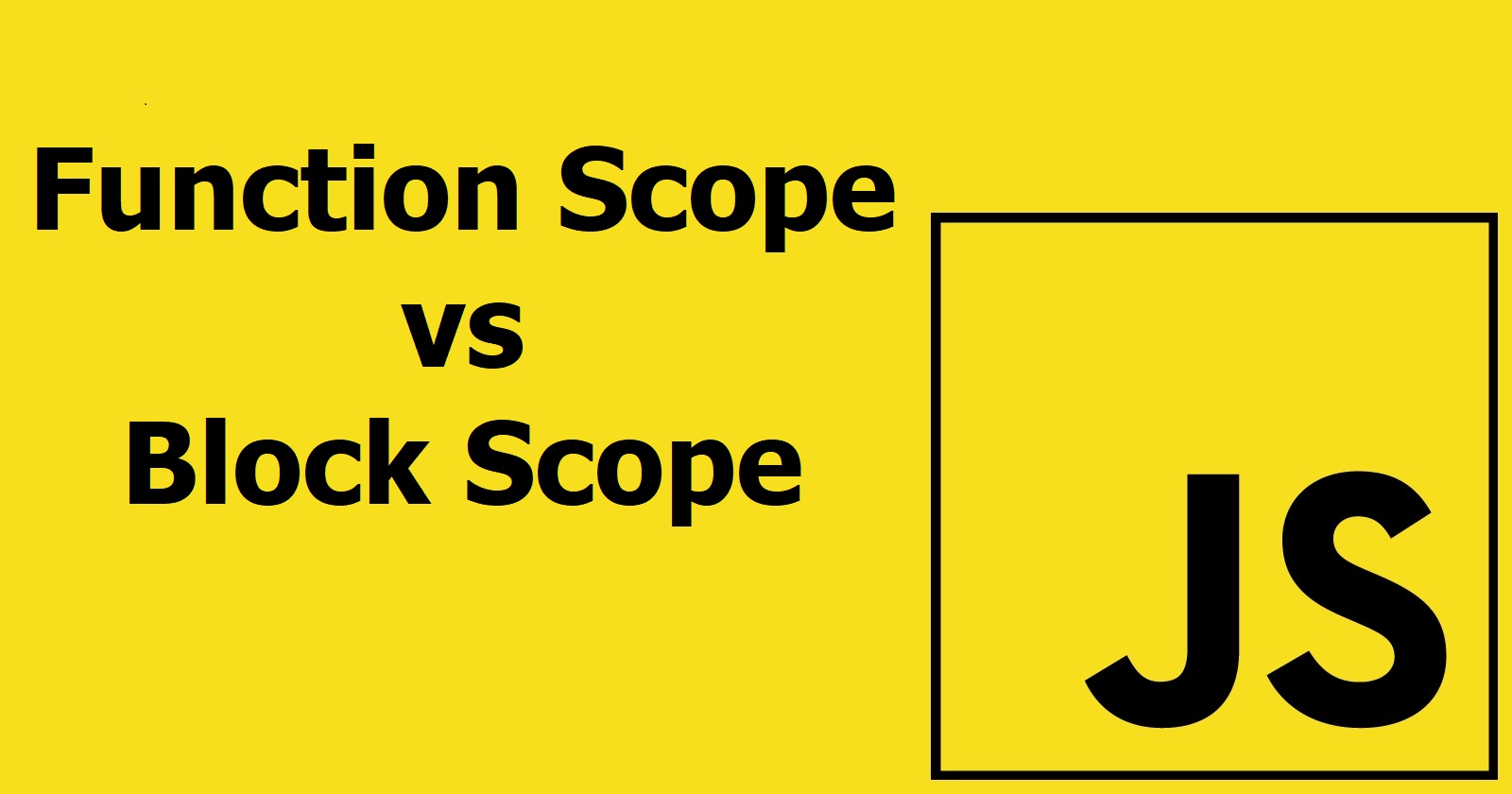JavaScript Interview Question: Function Scope vs. Block Scope
 Anirudha Patil
Anirudha Patil
JavaScript, like any other programming language, has a concept of scope that dictates the lifetime or availability of a variable or function. In this article, we will explore the difference between function scope and block scope, hoisting in JavaScript.
Function Scope vs. Block Scope
In JavaScript, there are two types of scope: function scope and block scope. Before we delve into the difference between them, let's understand what scope means. When we talk about the scope of a variable or function, we are referring to its lifetime or availability.
For instance, if you declare a variable inside a function, it won't be available outside that function. This is because the scope of the variable is limited to that function. Similarly, if you declare a variable inside a block statement like a loop or an if statement, it won't be available outside that block. This is because the scope of the variable is limited to that block.
Let's take an example to understand this better:
function a() {
var x = 10;
}
function b() {
console.log(x);
}
a();
b();
When we run the code above, it will give an error that x is not defined. This is because x is declared in function a and is not available outside that function. The scope of x is limited to function a.
Global vs. Local Scope
The scope of a variable in JavaScript can be local or global. A local variable is declared inside a function or a block, while a global variable is declared outside all functions and blocks.
Let's modify the previous example to make x a global variable:
var x = 10;
function a() {
x = x + 5;
}
function b() {
console.log(x);
}
a();
b();
Now, when we run the code above, it will output 15 because both function a and b are referring to the same variable x, which is global and available to the entire piece of code.
Hoisting and Block Scope
In ES5, variables declared with the var keyword are hoisted to the top of their scope. This means that the variable is available throughout the function, regardless of where it was declared.
Hoisting
Hoisting is a behaviour in JavaScript where variable and function declarations are moved to the top of their respective scopes during the compilation phase. This means that you can use a variable or function before it has been declared in your code. However, only the declaration is hoisted, not the initialization or assignment.
For example:
console.log(a); // output: undefined
var a = 1;
In this code, the variable a is declared and assigned the value of 1 on the same line. However, during hoisting, only the declaration of a is moved to the top, so when console.log(a) is executed, the value of a is undefined.
However, in ES6, variables declared with let or const are not hoisted, and their scope is limited to the block in which they were declared.
Let's take an example to understand this better:
function c() {
console.log(x); // undefined
var x = 5;
console.log(x); // 5
}
function d() {
console.log(y); // ReferenceError: y is not defined
let y = 10;
console.log(y); // 10
}
c();
d();
In function c, the variable x is hoisted to the top of the function, but its value is undefined until it is assigned the value 5. In function d, the variable y is not hoisted, and a reference error is thrown when we try to access it before it is declared.
Conclusion
In conclusion, understanding the scope of variables and functions is crucial to writing efficient and bug-free code in JavaScript. While function scope and block scope may seem confusing at first, a solid grasp of these concepts can help you write cleaner and more readable code.
The content of this blog post was inspired by the JavaScript - Marathon Interview Questions Series 2023 course on Udemy (udemy.com/course/javascript-marathon-interv..)
Subscribe to my newsletter
Read articles from Anirudha Patil directly inside your inbox. Subscribe to the newsletter, and don't miss out.
Written by

Anirudha Patil
Anirudha Patil
Hi, I'm Anirudha ! I'm currently learning frontend development and sharing my journey through blogging. Join me as I document my experiences, struggles, and victories as I become a skilled Frontend Developer.